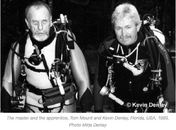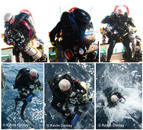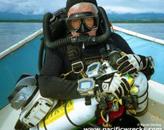Should you care to witness such behavior yourself sir, I suggest that you make a night dive at Manuelita, (as soon as the current closure of the site is lifted). I have yet to make a dive there without seeing at least one “frenzy.”[/QUOTE]
One question and one thought:
1) What would be the procedure to "re-open" the site of such an event to regular diving activities ?...I guess the Marine Park and maybe even Ministry need to validate the situation somehow before re-opening...would they send experienced parties to see "what happens if you dive" ?...would there be, maybe unbeknown to outsiders, attempts to remove animals ?...what do you do ?...just accept that an individual animal that may have experienced unwanted behavioral reinforcement by this attack is given a next chance to test it live seems to me something that should rather be tested under controlled conditions instead (as much as this is even possible )...??...there must be other similar cases of reference, eg from shark-surfer or shark-swimmer accidents, I guess...
2) What comes to my mind as well is that, as an operator, you may want to brief divers in much sterner ways about situations and behaviors they need to adopt in dive sites with a probability of "big three" encounters...sort of emergency procedure briefings...I must say that I never dived with the Undersea Hunter, so maybe they do that already, but I have dived in several places where we knew there would likely be (and there were)bulls, or tigers or oceanic whitetips and in most cases I just got descriptions that "there could be those indeed", not "procedure-under-attack" recommendations...I know that for many this is calculated risk they are well aware of (was for me) and they may even be considering it in part as they carry their cameras, sticks, etc...but for a diver, even an experienced one, but a rookie in terms of these animals, a lack of specific behavior instructions may be the missing element between a knee-jerk flight with consequences or a more adequate reaction...again, maybe all this is regular operating procedure somewhere, but I have not encountered it when it came to my own dives ...









